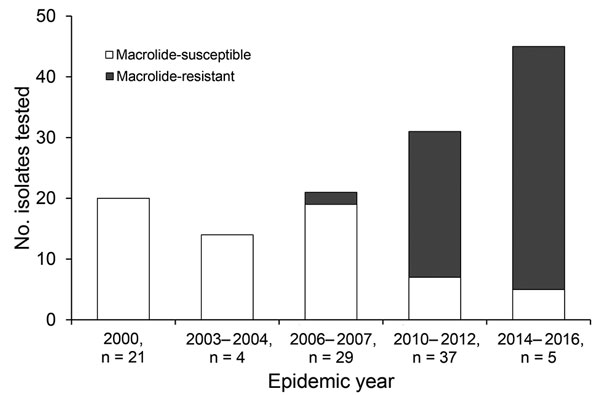Volume 24, Number 8—August 2018
Research
Clonal Expansion of Macrolide-Resistant Sequence Type 3 Mycoplasma pneumoniae, South Korea
Figure 1

Figure 1. Macrolide resistance of Mycoplasma pneumoniae, South Korea, 2000–2016. Each number on the bar graph indicates the macrolide-resistancet of each epidemic year. The proportion of macrolide resistance strains by each outbreak were as follows: 0% (2000 and 2003–2004), 3.4% (2006–2007), 54.1% (2010–2012), and 84.4% (2014–2016).
1These authors contributed equally to this article.
Page created: July 18, 2018
Page updated: July 18, 2018
Page reviewed: July 18, 2018
The conclusions, findings, and opinions expressed by authors contributing to this journal do not necessarily reflect the official position of the U.S. Department of Health and Human Services, the Public Health Service, the Centers for Disease Control and Prevention, or the authors' affiliated institutions. Use of trade names is for identification only and does not imply endorsement by any of the groups named above.